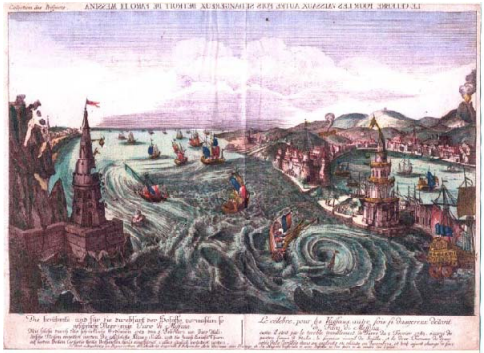One of the best known folktales from Sicilly is the story of the amphibic boy Colapesce, who saves the city Messina (or the island of sicily according to some texts) from drowning. There are several divergent versions of the story, apparently the oldest one dating back to the 12. Century and this is also the one commonly found online.
I found another version, which tells about the rape of Colapesce’s mother by a dolphin while she went swimming in the sea. There are numerous similar stories of sexual encounters – some romantic and consentient, others forced and violent – between women and sea animals like seal, fish or whales from Alaska, Scandinavia as well as the Mediterranean.
I could not find an english translation of this version but here is the more common and much shorter version as can be found online in english:
“There once was the son of a fisherman named Nicola (Cola) who lived in Messina. Cola spent his days swimming in the sea and exploring the underwater world as if it was his own. His mother didn’t approve of this pastime, since Cola would often release fish caught for food back into the sea. One day, filled with anger, she yelled at him “Cola! May you turn into a fish!”.
As time passed, his skin turned scaly, and his feet and hands began to look like fins. Cola’s fate quickly became the talk of town all over Sicily, and even caught the attention of the King. The King, incredulous that Cola’s condition could be true, made the trip to Messina to see for himself.
Testing the young Cola, the king threw a gold cup into the sea and ordered him to retrieve it. Cola did as he was asked, and the King repeated the same test twice more, using even more valuable objects. For the last test, rather than the gold cup, the King threw his very own crown into a deeper part of the sea. While Cola was searching for the crown, he saw that his island, Sicily, was held up by only three columns. Two of the columns were intact, but the third was perilously filled with cracks and looked ready to collapse at any moment. Cola decided to stay in the ocean and take the place of that third column so that his beloved Sicily wouldn’t fall. To this day, Colapesce holds up that part of the island. Every so often, between the regions of Messina and Catania, the earth trembles. Locals say that there’s no need for concern— it’s only Colapesce moving the island from one tired shoulder to the other.”
from this site.

